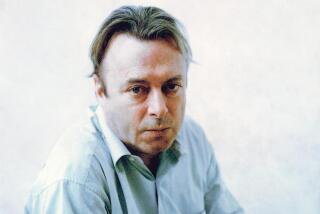In not writing memoir, John McPhee has hit upon its truer form
In recent years, the writer John McPhee has stepped away from lucidly detailing complex structures like rocks and lacrosse plays, and has instead taken himself — and his 55 years working for the New Yorker — as his subject. In a series of essays that were collected in the book “Draft No. 4” (published in 2017), McPhee wrote about his handshake book contracts with publisher Roger Straus and trying to get a banished obscenity past Robert Gottlieb and into the pages of the New Yorker. But more than anything, McPhee was writing about writing, and the very particular, sometimes arduous way he goes about reporting, organizing and, most importantly, structuring his stories (using the wildly outdated Kedit “text editor” he has worked on since 1984).
Invaluable as these insights are to any kind of nonfiction writer, McPhee’s preoccupation with structure has changed the experience of reading his work — especially in “The Patch,” a new collection of essays that is organized in two sections. First, “The Sporting Scene” — six New Yorker pieces on physical endeavors: football, golf, lacrosse and less organized sports like fishing, or McPhee’s fruitless endeavor to see a wild bear in New Jersey. The second, longer section is titled “An Album Quilt” — named for a style of quilting in which every block is unique — and features snippets of McPhee’s work “written for both public and private occasion through the years,” dating back to when he had his first job at Time. “In aggregate,” he writes, “I sifted about two hundred and fifty thousand words and got rid of seventy-five percent. I didn’t aim to reporting the whole of anything. Instead, I was looking for blocks to add to the quilt, and not without new touches, internal deletions, or changed tenses — trying to make something, not just preserve it, and hoping the result would be engaging enough to read.” It’s a work that gains its newness through structure alone.
True to title, “the blocks differ, each from all the others,” as McPhee explains in a brief introduction. In the opening pages of the quilt, McPhee swings from a snippet profile of Cary Grant — “More or less successfully, he spends his real life pretending he is Cary Grant” — to a Talk of the Town-like piece about Mary Lindsay, the former first lady of New York City (whose husband, John Lindsay, was mayor from 1966 to 1973), playing ping-pong, followed by a few paragraphs on how, “like a city planner,” the motion of tectonic plates created Los Angeles. The jumps — from a private D.C. golf club to the bed of Sophia Loren’s wet nurse to a performance of the all-bear Moscow State Circus — recall the quick cuts of Renata Adler’s “Speedboat.”
While a more obsessive or academic reader of McPhee might readily place these snippets in the pieces from whence they came, the experience of having decades of details and observations and exacting description wash over you, the time or the context of the writing never exactly clear, is a fascinating one. In the promotional materials for the book, McPhee’s publisher calls “The Patch” “a covert memoir.” There are sections that read overtly as memoir, such as the title essay about fishing for pickerel and the death of McPhee’s father, and McPhee telling his father about fishing for pickerel as he was about to die. But on the covert side of things, I imagine that “An Album Quilt” is a rather close approximation of what it is like for someone — anyone — who is 87 years old to look back at a near-century span of life and recall moments both personal and public.
As a book, “The Patch” is by no means the story of a life from beginning to end — A Memoir — but it is maybe a more honest and effective way of stitching together the memories of a life, the structure in a way acknowledging that a neat beginning, middle and end is part of the artifice of writing.
Certain patterns emerge. McPhee’s focus is not on contemporary life, and “An Album Quilt” offers glimpses of the world when it was more thoroughly controlled, top to bottom, by a small number of men. There’s Bill Wagner, who for more than 45 years oversaw vats of chocolate being churned by granite rollers until the alchemy of stone and heat and motion made Hershey’s taste like Hershey’s. There’s the high-ranking general whom McPhee cannot talk to without speaking to another general before finally learning the first general’s golf score. There are the three men who oversaw the stacks of gold buried in the limestone vault underneath the Federal Reserve Bank in Manhattan. “It’s my gold. I keep it in Al’s house, and Sam handles it,” said Richard Hoenig, an assistant vice president at the Fed — in 1974, when the piece was originally published in the New Yorker. (There are no citations or dates included in the book.) Just Dick, Al and Sam, and the wealth of nations in a hole in the ground in Manhattan. And they’re talking not just with a reporter, but John McPhee — a man upon whom the world turns to a degree too. It’s not just anyone who can go down into the Federal Reserve vault, after all.
McPhee is the kind of guy who plays tennis and basketball with a lot of powerful, important men. He is impressively familiar with the states of undress such men chose to be in when at any of the various clubs where they are welcome and others are not. But while he seems perfectly comfortable in these spaces, he closes the quilt, and the book, out on the frozen Yukon — the kind of setting he touches on throughout “An Album Quilt” in which the sense of pure awe that animates so much of McPhee’s writing comes through most clearly. “The sun was disappearing, and there were pink bolts across a blue sky above a white river,” he writes. “The big stars came out quickly.” The mail plane would take him home in the morning, but just then the wilderness was his to take in and hold. It’s the kind of moment that must be nice to think back on — and to bear witness to as a reader.
Blackmore is a freelance journalist who covers food, culture and the environment. He lives in Maine.
John McPhee
Farrar, Straus and Giroux: 256 pp., $26
More to Read
Sign up for our Book Club newsletter
Get the latest news, events and more from the Los Angeles Times Book Club, and help us get L.A. reading and talking.
You may occasionally receive promotional content from the Los Angeles Times.






